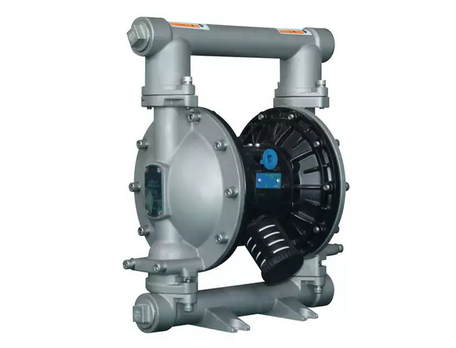The difference between pneumatic diaphragm pump and electric diaphragm pump
There are significant differences between air-operated diaphragm pumps and electric diaphragm pumps in many aspects. Here is a detailed comparison of these two pump types:
1. Driving method
Pneumatic diaphragm pump: uses compressed air as the power source, and uses the compressed air to push the flexible diaphragm inside the pump to produce reciprocating motion, thereby realizing the suction and discharge of liquid. This driving method makes the pneumatic diaphragm pump more reliable and low-cost in flammable and explosive environments.
Electric diaphragm pump: It is driven by a motor as the power source. The motor drives the diaphragms on the plungers at the left and right ends to reciprocate one after another through the reduction box. Electric diaphragm pumps require an electrical power supply and therefore may be limited in environments where power is unavailable or unstable.
2. Traffic parameters
Pneumatic diaphragm pump: usually has a large flow rate, the maximum flow rate can reach 60m³/h or higher, and is suitable for occasions requiring large flow transmission.
Electric diaphragm pump: The flow rate is relatively small, generally not exceeding 28m³/h, and is suitable for the transportation needs of small and medium flow rates.
3. Flow adjustment
Pneumatic diaphragm pump: The flow rate can be easily adjusted by adjusting the air source pressure, which makes the pneumatic diaphragm pump more flexible in flow control.
Electric diaphragm pump: Ordinary models usually cannot directly adjust the flow rate, and a frequency converter needs to be installed to achieve flow adjustment.
4. Explosion-proof performance
Pneumatic diaphragm pump: Due to its structural characteristics, the pneumatic diaphragm pump is structurally explosion-proof and suitable for various types of flammable and explosive places.
Electric diaphragm pump: To meet explosion-proof requirements, an explosion-proof motor is usually required, which increases the cost and complexity of the equipment.
5. Ability to hold back pressure
Pneumatic diaphragm pump: The outlet supports pressure suppression and can withstand pressure changes within a certain range.
Electric diaphragm pump: The outlet usually does not support pressure holding, and a safety valve or pressure relief valve needs to be installed to prevent excessive pressure.
6. Cost and Maintenance
Pneumatic diaphragm pump: Under the same model, the price of pneumatic diaphragm pump is usually cheaper, and due to its relatively simple structure, the maintenance cost is also low.
Electric diaphragm pump: The cost is relatively high, and due to the presence of motors and other components, the maintenance cost is also relatively high.
7. Application fields
Pneumatic diaphragm pump: widely used in chemical industry, mining, food processing and other industries, especially suitable for transporting high viscosity, granular liquids and various strong acids, strong alkali and corrosive fluids.
Electric diaphragm pumps: are more commonly used in petrochemical, ceramics, metallurgy and other industries. They are favored for their features such as no need for water irrigation and strong self-priming ability.

In summary, there are significant differences between pneumatic diaphragm pumps and electric diaphragm pumps in many aspects. When selecting, comprehensive considerations should be made based on the specific use environment and needs.




